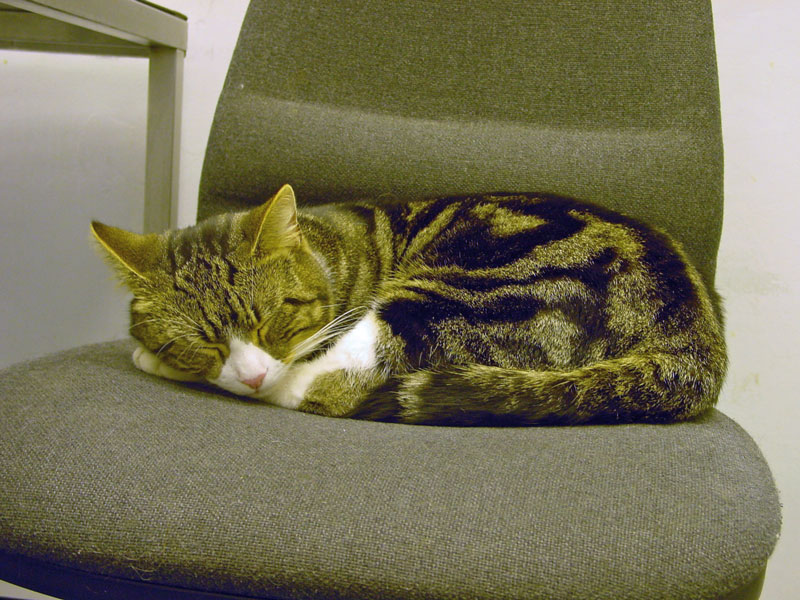Care: Mental wellbeing
Look after a cat’s mental wellbeing
A cat’s mental wellbeing is compromised when it becomes distressed
When cats arrive at a homing centre they can already be stressed by the travel and by being in a strange place. Cats can find it stressful when they can’t predict or control what is going on around them. How each cat copes with this unfamiliar environment and the people in it, is determined by its genes (characteristics inherited from its parents) and its life experiences (see what influences where cats sit within this range).
Caring for cats requires them to be in close proximity to people on a regular basis. How comfortable cats are with people is important as it shows how they will cope with handling, how they might react to strangers and what their preferred requirements are for social contact. Some cats love to be stroked and sit on laps, some like to sit nearby but not be touched, and some like contact only when they initiate it. Sometimes we take for granted that all cats like to be petted as much as we like to do it. We can find it hard to tell the difference between cats that only tolerate our affection and those that enjoy it!
Cats can either settle in homing centres and cope, ie, deal effectively with the difficult situation, or fail to cope during their stay.
What does a distressed cat look like?

Examples of distressed cats
Stress can trigger an automatic response; the cat’s body which takes over in the face of danger and prepares to
- fight to repel the danger
- take flight to avoid the danger
- freeze to take time to assess the danger
- fidget to distract the cause of the danger from doing it harm
Short term, acute stress can look like this. However, stress is designed to be short-lived and when the cat cannot remove itself from the danger, it can quickly begin to feel distressed.
Distress is caused by long-term exposure to things that the cat finds frightening but cannot escape from or control. This kind of stress is not beneficial to survival and compromises the cat’s quality of life. Distress encompasses emotions of fear, anxiety, frustration and the feelings of pain and discomfort. It can be physically harmful (altering the cat’s immune system and making it less able to fight off infection) and mentally harmful (potentially leading to long-term psychological damage).

Common signs of long-term distress
This long-term distress can be more difficult to recognise as the signs are more subtle and can vary from one individual to another. Common signs include:
- Increased resting, pretending to be asleep
- Over-eating
- Lack of play activity
- Hiding
- Over-grooming parts of the body, often causing hair loss or reduced/absence of grooming
- Toileting outside the litter tray
- Conflicting behaviour occurring simultaneously, eg a cat may come up to you in a friendly way with its tail up and then turn and swipe at you for what appears to be no reason
- Sickness behaviours including vomiting, diarrhoea, anorexia or decreased food and water intake

This cat is pretending to be asleep as it is in a stressful environment in a veterinary consulting room – look at the tension around the eyes, nose and ears




